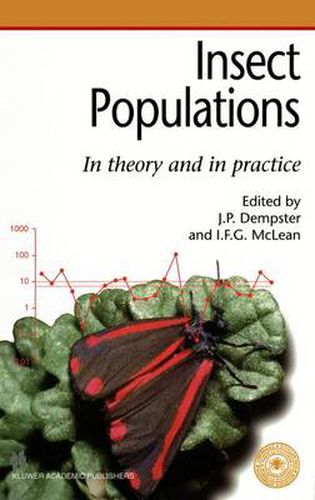Readings Newsletter
Become a Readings Member to make your shopping experience even easier.
Sign in or sign up for free!
You’re not far away from qualifying for FREE standard shipping within Australia
You’ve qualified for FREE standard shipping within Australia
The cart is loading…






Insects are far and away the largest group of animals on earth, with over a million described species, and they occupy a wide range of ecological niches - they may be herbivores, predators, parasites or decomposers. Some are of particular economic importance as pests of agriculture and forestry, as vectors of animal and human disease, or as species of interest to wildlife conservation, so an understanding of the processes determining their numbers is of considerable practical value. Entomologists have played a leading role in developing a theoretical basis to population ecology, but we still do not have adequate experimental and observational proof for many of the theoretical ideas that have been proposed. As a result, the subject has been beset with arguments for more than 50 years. This volume attempts to reconcile some of those controversies, while also reviewing the state of our knowledge at the end of the 20th century. The editors have drawn together views which reflect the full range of opinions on how natural populations are stabilized. The book covers the main alternative views in population theory and contains recent field studies of insect populations. This Royal Entomological Society Symposium volume should be of interest to all entomologists and ecologists, particularly those who wish to know more about population dynamics.
$9.00 standard shipping within Australia
FREE standard shipping within Australia for orders over $100.00
Express & International shipping calculated at checkout
Insects are far and away the largest group of animals on earth, with over a million described species, and they occupy a wide range of ecological niches - they may be herbivores, predators, parasites or decomposers. Some are of particular economic importance as pests of agriculture and forestry, as vectors of animal and human disease, or as species of interest to wildlife conservation, so an understanding of the processes determining their numbers is of considerable practical value. Entomologists have played a leading role in developing a theoretical basis to population ecology, but we still do not have adequate experimental and observational proof for many of the theoretical ideas that have been proposed. As a result, the subject has been beset with arguments for more than 50 years. This volume attempts to reconcile some of those controversies, while also reviewing the state of our knowledge at the end of the 20th century. The editors have drawn together views which reflect the full range of opinions on how natural populations are stabilized. The book covers the main alternative views in population theory and contains recent field studies of insect populations. This Royal Entomological Society Symposium volume should be of interest to all entomologists and ecologists, particularly those who wish to know more about population dynamics.